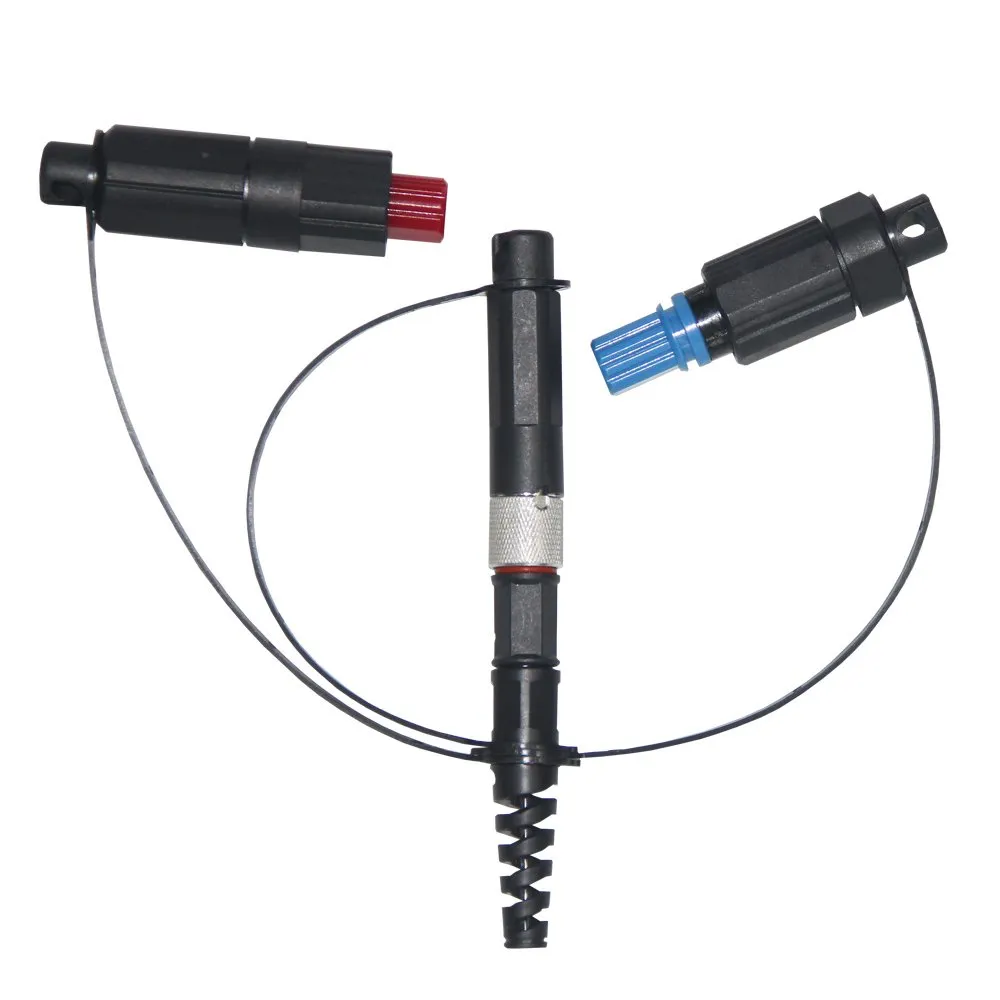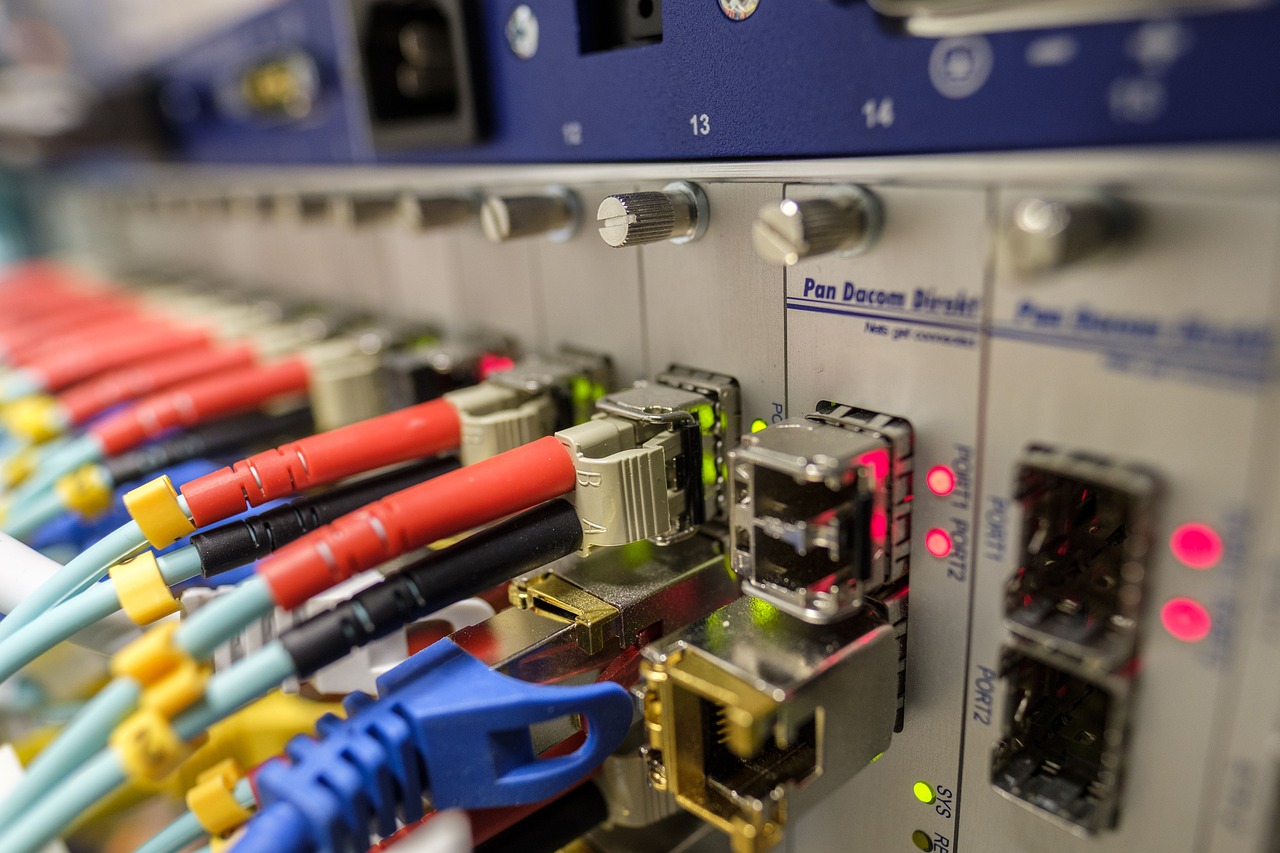5 Essential Tips for Using SC/APC Field Connector in FTTH Installations

Understanding the Basics of SC/APC Field Connectors
When it comes to Fiber Optic installations, understanding the role of a SC/APC Field Connector is crucial. These connectors play a pivotal role in ensuring seamless connectivity and efficient data transmission within FTTH (Fiber to the Home) setups.
What is a SC/APC Field Connector?
A SC/APC Field Connector is an essential component in FTTH Installations, serving as the bridge that connects individual fiber optic strands. Its primary role is to establish a secure and low-loss connection between optical fibers, enabling the transmission of high-speed data signals over long distances. The precision and reliability of these connectors are paramount in maintaining the integrity of the entire Fiber Optic network.
The role in FTTH Installations
In FTTH setups, where high-speed internet access is paramount, SC/APC Field Connectors facilitate the seamless integration of fiber optic cables into homes and businesses. They ensure that data signals travel with minimal interference, resulting in consistent and reliable internet connectivity for end-users.
Why Use Universal SC/APC Field Connectors?
Universal SC/APC Field Connectors offer a range of benefits, particularly in the context of delivering high-speed internet services via fiber optics.
Benefits for High-Speed Internet
Fiber Optic networks equipped with universal SC/APC Field Connectors can deliver blazing-fast internet speeds, meeting the increasing demands for bandwidth-intensive applications.
These connectors minimize signal loss and maintain signal quality, ensuring that users experience consistently high-speed internet connectivity without disruptions.
By using universal connectors, service providers can streamline their installation processes, reducing deployment time and costs associated with establishing robust FTTH networks.
Preparing for Your First FTTH Installation
Before embarking on your first FTTH installation, it's crucial to ensure that you have the necessary tools and a well-thought-out plan in place. Proper preparation sets the stage for a successful and efficient installation process.
Gathering the Right Tools
When preparing for your first FTTH installation, gathering the right tools is essential to ensure a smooth and precise setup. One of the most critical components in this process is the Universal Field Connector. This connector plays a pivotal role in establishing reliable connections between fiber optic cables, ensuring seamless data transmission within the Fiber Optic network. Additionally, having precision fiber cleavers, quality fusion splicers, and protective gear such as safety glasses and gloves is imperative to guarantee safety and accuracy during the installation process.
Importance of the Universal Field Connector
The Universal Field Connector holds significant importance in FTTH installations due to its versatility and compatibility with various fiber optic cable types. Its universal design allows for flexibility in connecting different fibers, streamlining the installation process while maintaining high connection integrity.
Planning Your Installation
In addition to gathering the necessary tools, meticulous planning is vital for a successful FTTH installation. Mapping out the fiber optic route beforehand ensures that you have a clear understanding of how the cables will be laid out and connected. By carefully planning the route, you can identify potential obstacles or areas that may require special attention during the installation process. This proactive approach minimizes disruptions and helps maintain signal integrity throughout the entire network.
Mapping Out the Fiber Optic Route
Mapping out the fiber optic route involves identifying entry points into buildings or homes, determining optimal cable pathways within structures, and planning for efficient cable termination points. This strategic approach not only ensures a smooth installation but also allows for future scalability and maintenance of the FTTH network.
Step-by-Step Guide to Using SC/APC Field Connectors
When it comes to using SC/APC Field Connectors in Fiber Optic installations, a step-by-step approach ensures precision and reliability throughout the process. Here's a comprehensive guide to effectively utilize these connectors for seamless FTTH setups.
Stripping the Fiber Optic Cable
Before attaching the SC/APC Field Connector, it's essential to carefully strip the outer layer of the Fiber Optic cable to expose the inner fibers. Use precision fiber strippers to ensure a clean and accurate removal of the protective coating. This step is crucial in preparing the fibers for connection while maintaining safety protocols to prevent any damage.
Ensuring Precision and Safety
During the stripping process, prioritize precision to avoid damaging the delicate fibers within the cable. Additionally, wearing safety glasses and gloves is imperative to protect against any potential hazards during this operation.
Cleaving the Fiber for Perfect Alignment
Once the fibers are exposed, cleaving them with precision is vital for achieving perfect alignment before connecting them with the SC/APC Field Connector. Utilize specialized fiber cleaving tools and techniques to achieve a clean cut, ensuring optimal alignment for a strong and reliable connection.
Techniques for a Clean Cut
Employing proper cleaving techniques such as scribing or breaking ensures that each fiber end is smooth and perpendicular, guaranteeing precise alignment when attaching the SC/APC Field Connector.
Attaching the SC/APC Field Connector
After preparing the fibers, carefully attach the SC/APC Field Connector by aligning it with the cleaved fiber ends. Secure a strong connection by following manufacturer guidelines and utilizing precision fusion splicing equipment if necessary.
Securing a Strong Connection
Ensuring that the connector is securely fastened to the fibers is crucial for maintaining signal integrity. Properly securing the connector guarantees reliable data transmission within your FTTH network.
Testing for Successful Installation
Once the SC/APC Field Connector has been securely attached, it's crucial to conduct comprehensive testing to ensure the successful integration of the fiber optic cables within your FTTH network.
Confirming Signal Strength and Quality
To validate the effectiveness of the SC/APC Field Connector, begin by testing the signal strength and quality of the transmitted data. Utilize specialized optical time-domain reflectometers (OTDR) or power meters to measure signal loss and verify that the connection maintains optimal performance levels. By conducting these tests, you can identify any potential issues such as excessive signal attenuation or irregularities in signal quality, allowing for timely adjustments to maintain seamless data transmission.
Additionally, performing end-to-end testing using light sources and optical receivers helps confirm that the installed SC/APC Field Connectors effectively facilitate high-speed data transmission without compromising signal integrity. This thorough testing process ensures that your FTTH installation meets stringent performance standards, providing end-users with reliable and uninterrupted access to high-speed internet services.
Troubleshooting Common Issues with SC/APC Field Connectors
When working with Fiber Optic networks, it's essential to be prepared for common issues that may arise with SC/APC Field Connectors. Identifying and addressing these issues promptly is crucial in maintaining the integrity and performance of your FTTH installation.
Identifying the Problem
Common Symptoms of Faulty Connections
Detecting potential problems with SC/APC Field Connectors involves recognizing common symptoms that indicate faulty connections. These symptoms may include Fiber Optic signal loss, inconsistent data transmission, or irregularities in internet connectivity. Additionally, visual inspections may reveal misaligned or damaged connectors, highlighting the need for immediate troubleshooting and resolution.
Solutions for Common SC/APC Connector Issues
Adjusting and Re-securing Connections
Addressing common issues with SC/APC Field Connectors often involves making precise adjustments and re-securing connections to restore optimal performance within your FTTH network. When encountering signal loss or intermittent connectivity, consider the following solutions:
Inspecting Connector Alignment: Verify that the Field Connector is correctly aligned with the fiber ends to ensure a secure and low-loss connection. Misaligned connectors can lead to signal degradation and require careful realignment for improved performance.
Cleaning and Re-cleaving Fibers: In cases where signal loss is attributed to contamination or irregular cleaving of fibers, thorough cleaning and re-cleaving procedures can rectify these issues. Utilize specialized cleaning tools to remove any debris or contaminants from connector end faces before re-cleaving the fibers for optimal alignment.
Re-evaluating Fusion Splicing: If persistent signal loss is observed, re-evaluate the fusion splicing process to ensure that the connection between fibers and the connector is robust and reliable. Proper fusion splicing techniques are essential in maintaining seamless data transmission within your FTTH network.
By implementing these solutions, you can effectively troubleshoot common issues associated with SC/APC Field Connectors, ensuring consistent performance and reliability in your Fiber Optic installations.
Maintaining Your FTTH System for Longevity
Ensuring the longevity and optimal performance of your FTTH system requires proactive maintenance and periodic upgrades to keep pace with evolving technological standards.
Regular Check-ups and Cleaning
Regular check-ups and cleaning are essential to maintain the peak performance of your Fiber Optic network. Conduct routine inspections to identify any signs of wear, damage, or contamination that may affect signal integrity. Additionally, cleaning fiber optic connectors and end faces is crucial to prevent signal loss due to dust or debris accumulation. By adhering to a regular maintenance schedule, you can mitigate potential issues and ensure consistent high-speed data transmission within your FTTH setup.
Keeping Your Fiber Optic System at Peak Performance
To keep your Fiber Optic system at peak performance, prioritize regular check-ups and thorough cleaning procedures. This proactive approach minimizes the risk of signal degradation and ensures that your FTTH network operates at optimal efficiency.
Upgrading Components as Needed
As technology advances, upgrading components within your FTTH system becomes necessary to meet the growing demands for high-speed internet connectivity.
When to Consider New SC/APC Field Connectors
When evaluating the need for component upgrades, consider the role of SC/APC Field Connectors in maintaining signal quality and reliability. If you encounter persistent connectivity issues or require enhanced data transmission capabilities, it may be time to consider integrating new SC/APC Field Connectors into your network. Upgrading to universal connectors can further optimize the performance of your FTTH installation, ensuring seamless connectivity for end-users.
See Also
Comprehending the SC/APC SM Fiber Optic Connector for FTTH
Vital Care Guidelines for FTTX Outdoor Precon Fiber Termination
Insight into 2.0 x 5.0mm 1FO Mini SC FastConnect Field Connector
Resolving Fiber Link Issues with 2.0×5.0mm SC UPC Field Assembly Connectors
A Comprehensive Manual for 1x32 PLC Fiber Splitter with SC/APC


